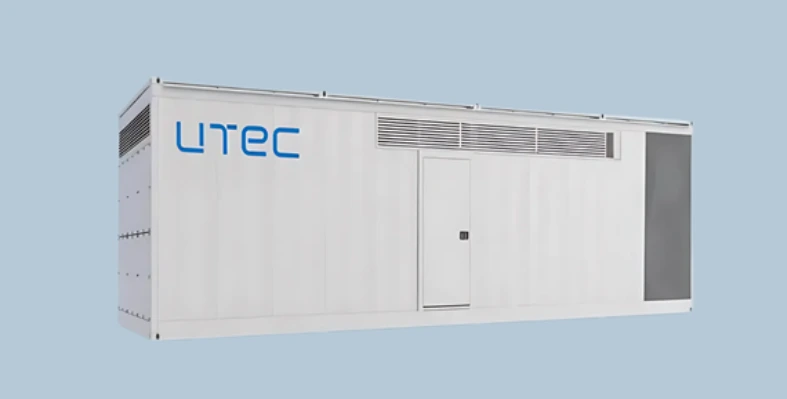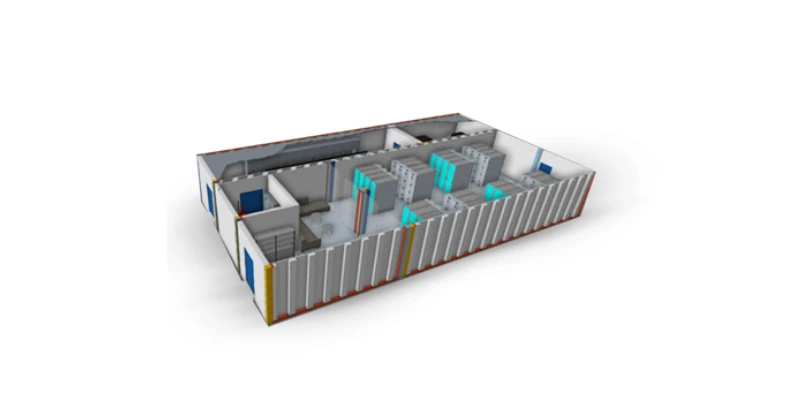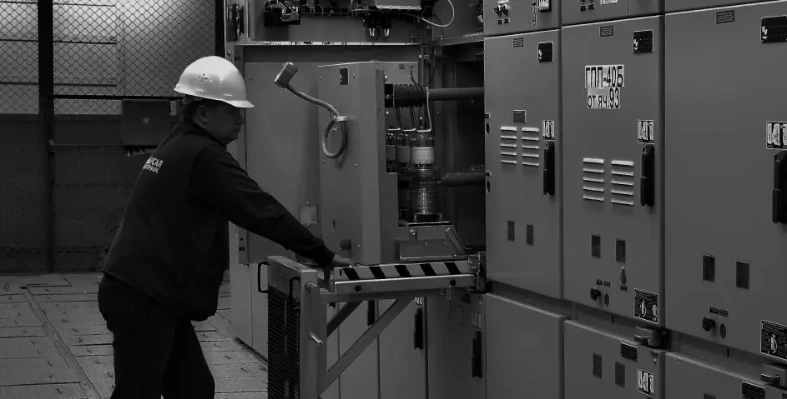UTEC highlights five key points explaining the need for modularity in building data centres. This helps them become more efficient, and helps meet energy demands of the future.
This is especially important for the Middle East where energy demand is expected to peak in the coming years, and data centres will need to cope with the challenges that come with it.
A new era in digital infrastructure
As AI demand surges, even the largest tech firms like Amazon Web Services (AWS) and Microsoft are confronting a new kind of bottleneck: the power grid. In 2024, Microsoft paused development on several AI-centric data centre projects. It was not due to technical hurdles or budget constraints, but because of limited local grid capacity. This underscores the critical importance of integrating highly efficient and reliable power distribution equipment within data centres. This critical industry demands solutions that optimise internal energy use and help alleviate pressure on the external grid infrastructure.
The data centre market within the GCC is expanding rapidly. Several initiatives and investments by the government and private sector are the reasons behind the surge in the market. The swift development of multiple large-scale data centre projects across GCC states is going to impact several domains within the power sector:
• Increased grid load
• Need for advanced electrical equipment
• Demand for reliable power distribution infrastructure
UTEC's modular data centres are engineered to address the growing demand for scalable and sustainable infrastructure. Designed with high-efficiency power distribution systems, they significantly reduce energy losses and limit stress on the grid, making them ideal for supporting technologies like AI, IoT, and cloud computing without compromising grid stability.
Is modularity more important now?
Modular data centres offer a scalable and future-proof infrastructure that supports the rising demand for AI, cloud computing, and other data-intensive technologies. Without scalable systems, organisations risk performance issues and escalating costs. Modular structures allow for efficient, phased expansion while maintaining reliability and availability.

Traditional, non-compact data centres are space-intensive and slow to deploy, particularly problematic in urban areas where real estate is limited. Technologies like AI and edge computing require low latency and real-time processing, making rapid scalability essential. Modular, compact solutions enable faster deployment and flexible scaling in confined spaces.
Prefabricated modular units also address challenges of inconsistent on-site construction standards and limited skilled labour in various regions. These factory-built modules ensure quality and reduce risks associated with local variability, supporting global deployment strategies.
Sustainability is another driver. As data centres grow in size and energy usage, the need for eco-friendly solutions like dry-type transformers, SF6-free switchgear, lithium-ion batteries, and liquid cooling systems, has become critical. In response, markets such as the US and Europe are adopting green standards like LEED certification. This is influencing GCC countries to integrate sustainable technologies into their greenfield digital infrastructure projects.
Sustainable modular design
UTEC’s modular data centres (MDCs) are redefining sustainability and operational efficiency in the digital age through an integrated, intelligent design. Each MDC features a customised cooling system with targeted temperature control to maximise thermal efficiency. Advanced IoT capabilities enable real-time monitoring, predictive maintenance, remote asset management, and automated energy optimisation, ensuring smart, responsive operations. UTEC’s modular solution also unifies HVAC, lighting, safety, and security systems with full compatibility across DCIM and BMS platforms, delivering a cohesive, end-to-end infrastructure tailored to today’s evolving digital demands.
Whether a developer requires high-precision cooling, advanced power management, fire suppression, remote monitoring, or automation systems, UTEC provides bespoke solutions to match those needs. Its MDCs incorporate a full range of power distribution technologies, including smart MV switchgear, efficient dry or oil-based transformers, UPS systems, batteries, static transfer switches, and busways.

Intelligent monitoring tools such as mean-time-between-failures predictions and failure mode and effects analysis (FMEA) further enhance reliability by enabling predictive maintenance and early fault detection. Altogether, UTEC’s modular approach supports rapid deployment, operational continuity, and long-term sustainability.
UTEC specialises in modular rack-mounted power shelves designed to minimise installation and maintenance time. With hot-swappable insertion capabilities, our systems allow for seamless exchange and expansion even during live operations. Built for flexibility and scalability, the racking solution supports various voltage levels and loads, making it easy to add or remove shelves as power demands evolve. Engineered with redundancy options, the system ensures continuous uptime and reliability across a range of applications.
Our commitment to resilience is reflected in our certification by the UPTIME Institute, reinforcing UTEC’s position as a trusted OEM. All products are developed in line with the Institute’s stringent Design and Constructed Facility standards. From concept to completion, UTEC provides a fully integrated offering such as spanning design, engineering, manufacturing, and site deployment. Each project is supported by comprehensive Service Level Agreements (SLAs) to guarantee consistent performance, availability, and long-term support.
UTEC’s commitment standards
UTEC has partnered with Schneider Electric in a strategic alliance to design and manufacture modular data centres within Saudi Arabia. The collaboration aims to significantly enhance local value creation.
Under the alliance, we have built a Smart Solution Facility spanning over 10,000 sq km primarily to support the GCC modular data centres demand. The facility is set to deliver its first locally designed and manufactured modules to Saudi Telecom Company’s (STC) data centre.

Future-ready infrastructure
With Saudi Arabia's Vision 2030, the UAE Digital Economy Strategy, and Qatar Digital Agenda 2030 in place, the region is poised to become a major demand center for a range of modern technologies including IoT, digitalisation and edge computing, and more. For the past two decades, UTEC has been serving Middle Eastern countries with its solutions. Leveraging its deep regional expertise, UTEC’s modular data centres are redefining how digital infrastructure is built.
For more information, contact:









